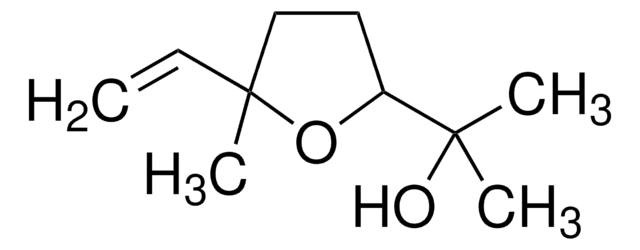W435600
trans-3-Hexen-1-ol
≥95%, stabilized
Synonym(s):
trans-3-Hexenol
About This Item
Recommended Products
biological source
synthetic
grade
Fragrance grade
Halal
Kosher
agency
follows IFRA guidelines
reg. compliance
EU Regulation 1223/2009
assay
≥95%
contains
alpha-tocopherol, synthetic as stabilizer
refractive index
n20/D 1.439 (lit.)
bp
61-62 °C/12 mmHg (lit.)
density
0.817 g/mL at 25 °C (lit.)
application(s)
flavors and fragrances
documentation
see Safety & Documentation for available documents
food allergen
no known allergens
fragrance allergen
no known allergens
organoleptic
green
SMILES string
[H]\C(CC)=C(\[H])CCO
InChI
1S/C6H12O/c1-2-3-4-5-6-7/h3-4,7H,2,5-6H2,1H3/b4-3+
InChI key
UFLHIIWVXFIJGU-ONEGZZNKSA-N
Looking for similar products? Visit Product Comparison Guide
Related Categories
Disclaimer
signalword
Warning
hcodes
Hazard Classifications
Eye Irrit. 2 - Flam. Liq. 3
Storage Class
3 - Flammable liquids
wgk_germany
WGK 3
flash_point_f
138.2 °F - closed cup
flash_point_c
59 °C - closed cup
ppe
Eyeshields, Gloves, type ABEK (EN14387) respirator filter
Certificates of Analysis (COA)
Search for Certificates of Analysis (COA) by entering the products Lot/Batch Number. Lot and Batch Numbers can be found on a product’s label following the words ‘Lot’ or ‘Batch’.
Already Own This Product?
Find documentation for the products that you have recently purchased in the Document Library.
Our team of scientists has experience in all areas of research including Life Science, Material Science, Chemical Synthesis, Chromatography, Analytical and many others.
Contact Technical Service









